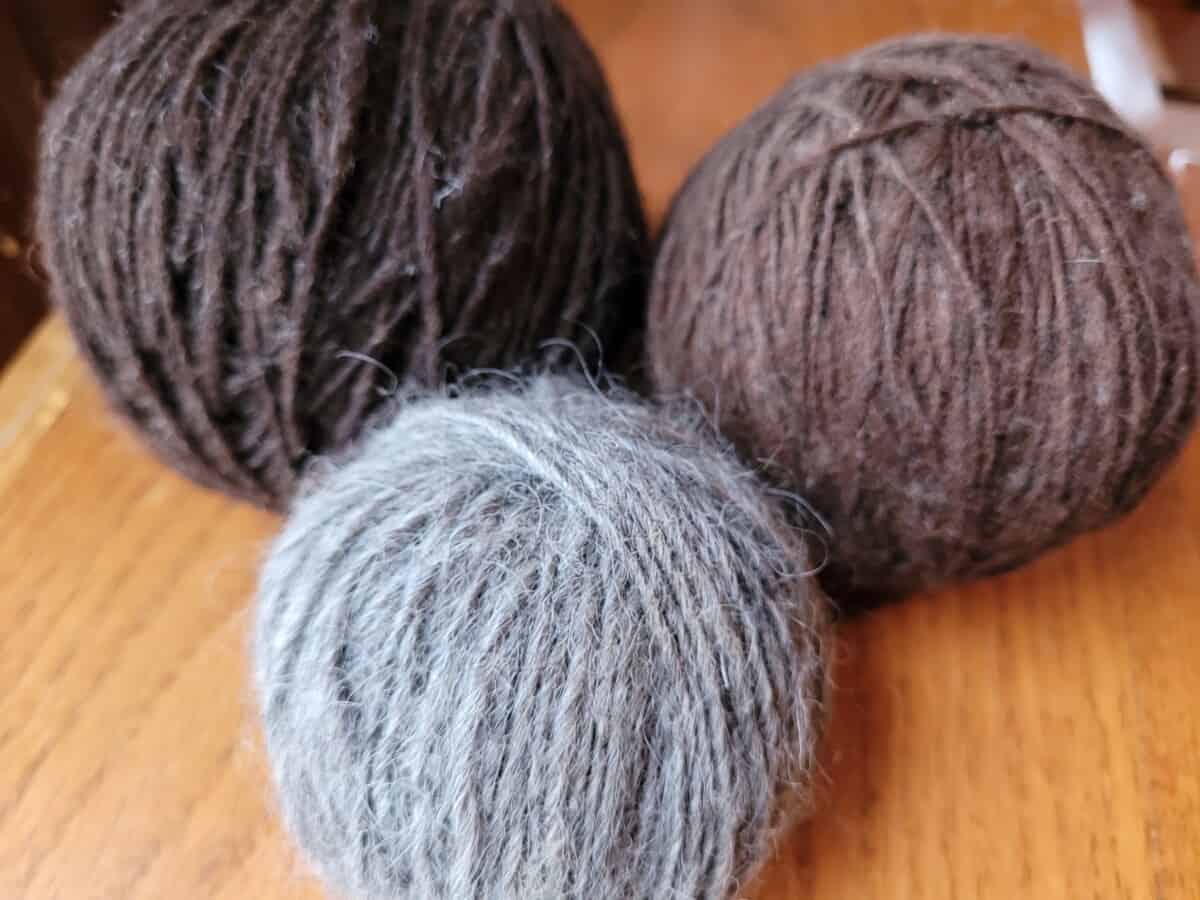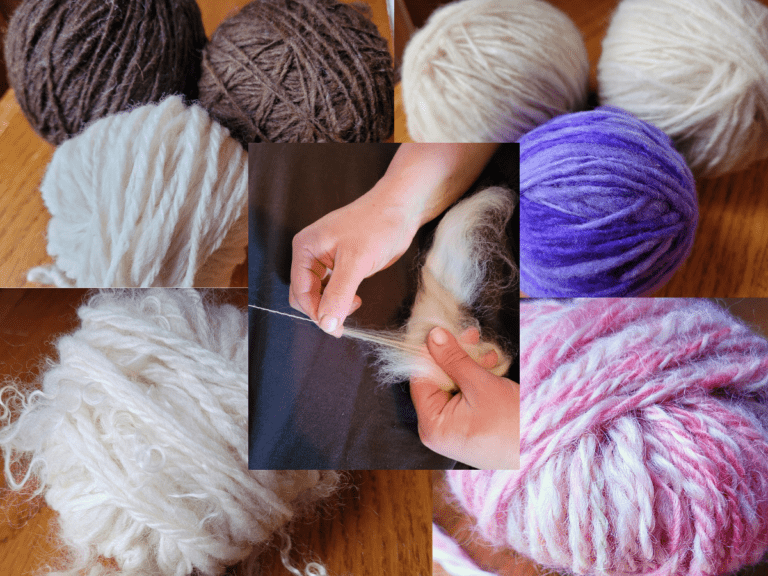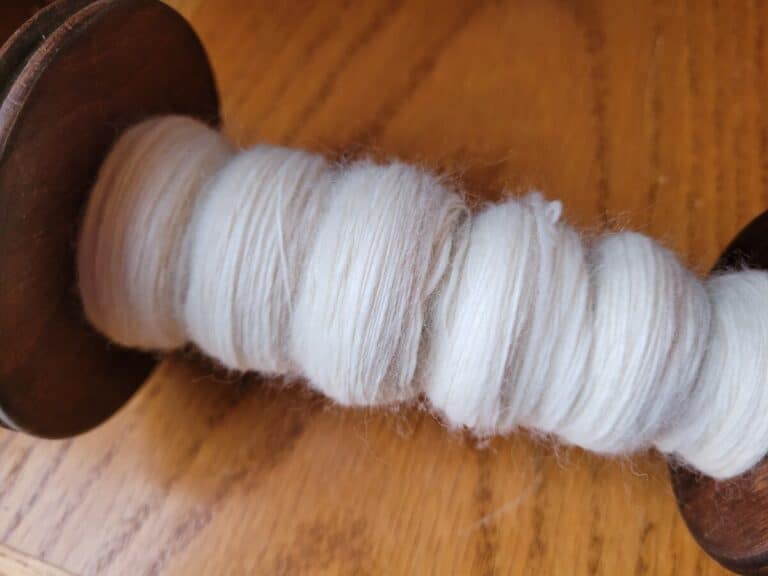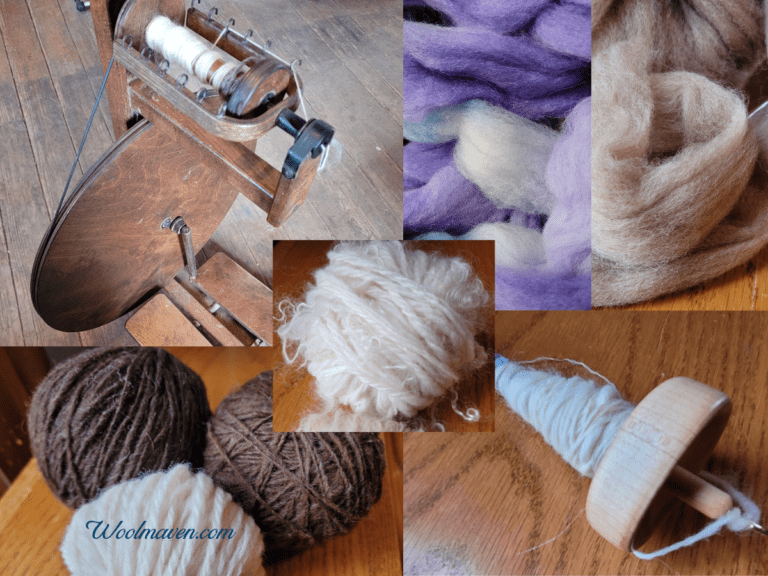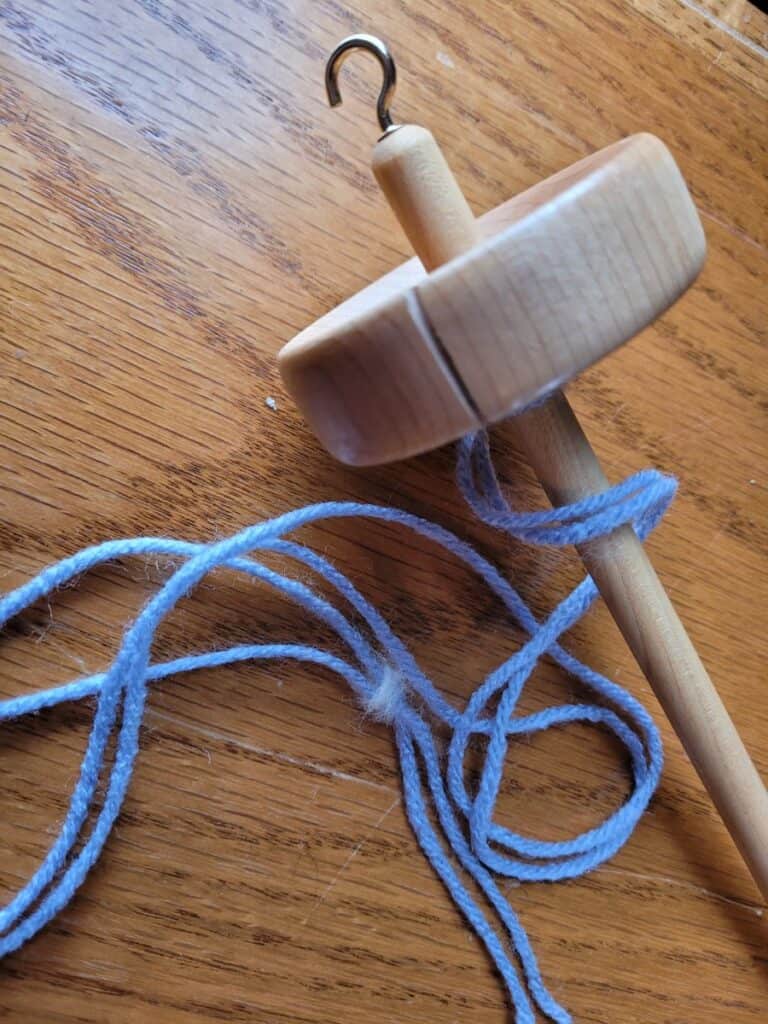Can You Spin Your Own Wool?
If you are interested in working with wool yarns, you’ve probably wondered if you could spin your own. There’s wool for sale online and maybe you could buy a fleece or two from a local shepherd at shearing!
But, once you get the wool, can you work with it, can you spin your own wool at home?
You can spin your own wool at home. You can spin washed and prepared wool that you have purchased, such as roving, and you can spin wool directly from your sheep or someone else’s sheep.
People have been spinning wool for ages, the wheels have modernized and you can buy ready to spin wool, versus having to wash it yourself, but the basic idea of spinning is old, so you can do it, too!
You can spin ready to use wool that is processed into roving or combed top, you can use wool from a fleece that you process or have processed and, for some fleeces, you can spin them without washing.
Is It Worth It To Spin Your Own Yarn? goes over the pros and cons of spinning versus buying yarn.
You can spin your own wool
You can definitely spin your own wool! That is one of the best parts about spinning, it’s versatile and you have tons of options for sourcing wool, from purchasing ready to spin fiber to working with raw wool.
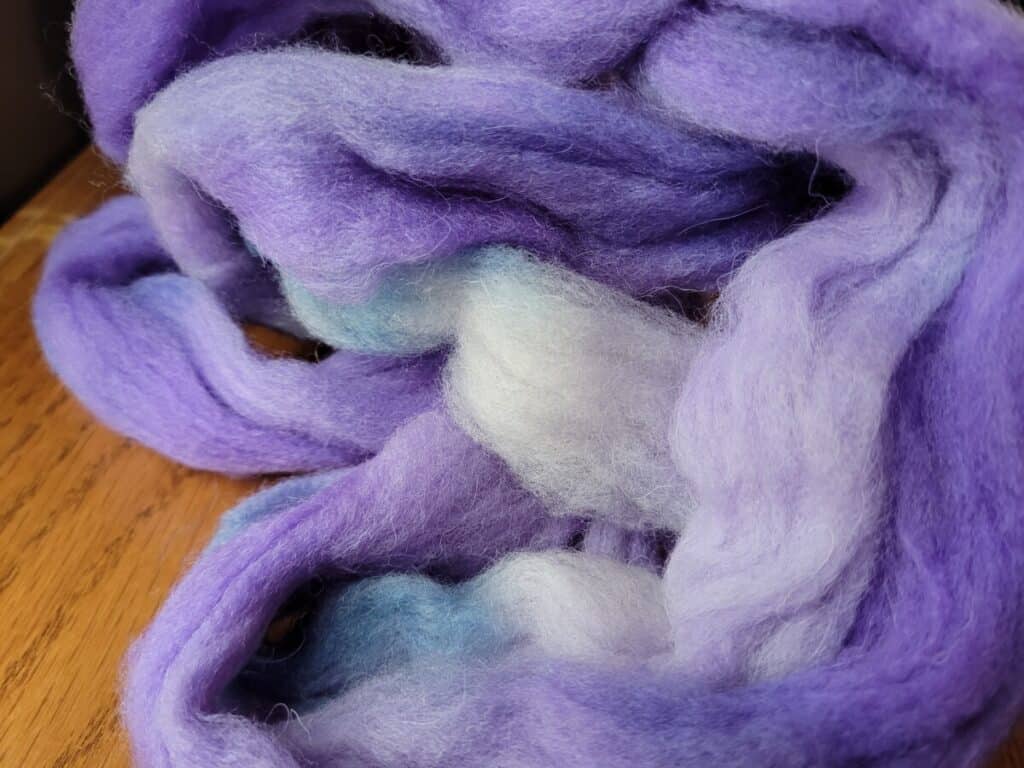
This post contains affiliate links, which means I receive commissions if you choose to purchase through links I provide (at no extra cost to you).
Spinning with processed fiber
If you want to get ready to spin fiber, go with roving or combed top, which is the easiest way to start spinning.
If you are a beginner, start with Corriedale combed top, it’s easy to spin and has some grip to it, so it doesn’t get sucked back up into the bobbin so quickly, like a slippery wool will.
If you think you’ll want something longer, go with Romney. Romney is more coarse than the Corriedale, but is longer, which gives you more time to work before the wool breaks off.
If you are having a hard time drafting (pulling wool thin enough to spin) consider some Blue Faced Leicester which has a bit more slip and will draft more easily.
How Much Does It Cost To Spin Wool? gives you a cost comparison for spinning versus buying wool yarns.
Roving or Combed Top
While these two terms are used interchangeably, they actually mean two separate things, both of which will work for handspinning.
Roving is a cloudlike rope of wool where the fibers are going in different directions. This is used for woolen spinning and will make a yarn with poof. Actual roving is hard to find, it’s usually really top.
Combed top is more of a river of ready to spin wool where all of the fibers are combed to be sitting parallel to each other. Combed top is smooth and very uniform, since all of the small fibers are gone.
Both roving and combed top are ready to spin and available at most spinning supply stores and, of course, from smaller shops and in person events, as well.
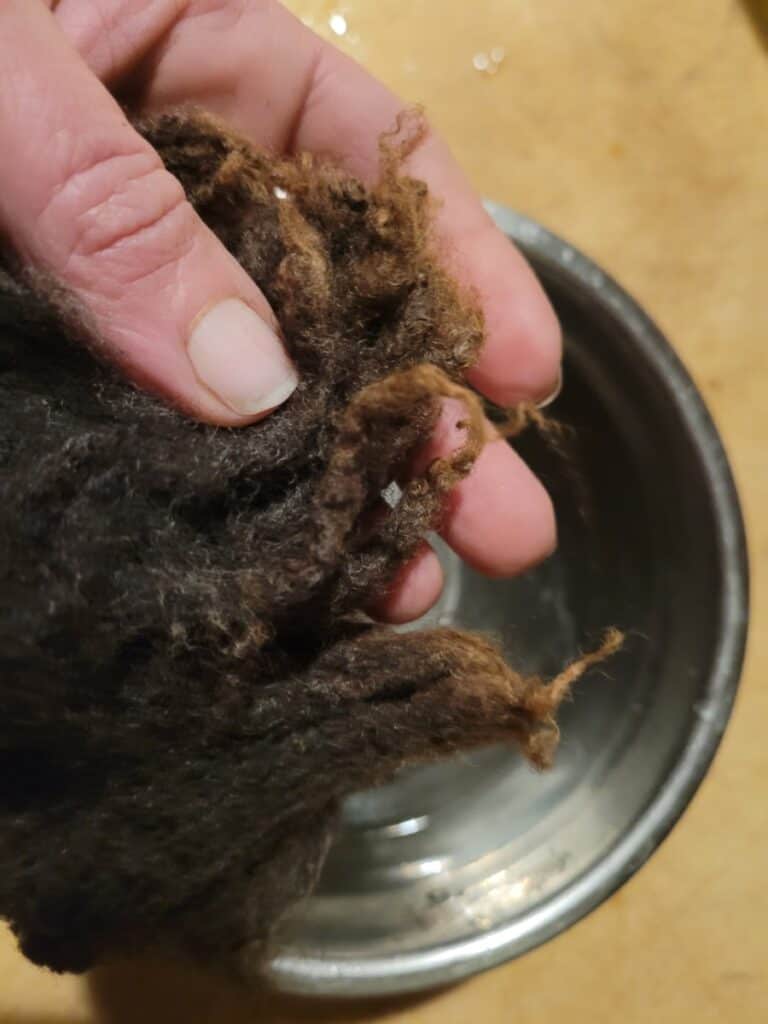
You can spin raw wool
If you desire, you can also spin raw or unwashed wool. This is also called spinning in the grease. Some fleeces lend themselves quite nicely to being spun raw, other fleeces, not so much.
Things to look for in a fleece you want to spin raw:
- low to no VM (vegetable matter)
- no manure
- low lanolin
- 3-5 inch staple
- easily separated fibers
Raw Wool vs Washed Wool goes over my outlook on the good points and not so good points of each so you can decide which will work best for you.
It is cheaper, overall, to spin your own yarn
It is cheaper to spin your own yarn if you would be buying the nicer or more high priced yarns for your projects instead of spinning your own yarn.
If you are happy with the very normal 100% worsted weight wool yarns and consider your time, you may be just as well off buying mill spun yarn.
If you are going with just the cost of the fiber, you save money spinning your own rather than buying, even if you are getting a very basic wool yarn.
If you enjoy working with the specialty yarns or yarns with interesting blends of color or fibers, you will also be better off, money wise, to learn to spin your own yarn.
From my calculations, making your own art yarn will cost you around $10-15 per skein in wool alone, more if you get really exotic, but that’s a good guess.
Can you get the yarn you want for $15 a skein? If so, keep buying from that shop! If not consider learning how to spin what you want so you increase your skills and get the specific yarns you want.
How to prepare your own wool for spinning
If you purchased roving or combed top, you are good to go!
I like to take 1-1.5 foot sections of roving top and split them into 2-4 smaller columns, just so it’s easier to work with, but other than that, if you buy prepared wool, you are ready to spin, straight from the bag!
Using a washed but unprocessed fleece
If you are planning on working with a washed but unprocessed fleece, you have a fleece that has been skirted and washed, but not carded or combed.
For some fleeces you will be able to spin directly from the washed fleece whereas other fleeces you will need to card or comb to separate out the fibers enough to spin.
You’ll have to see how easy this specific fleece is to work with. Take a lock of wool and try to separate it out into spinnable fibers.
Is it easy to separate out the fibers? If so, you are good to go. Just tear off a section of the fleece and get to spinning.
If the fibers will not easily separate out, you’ll need to try a flick carder or just use hand carders or combs, if you have longer wool.
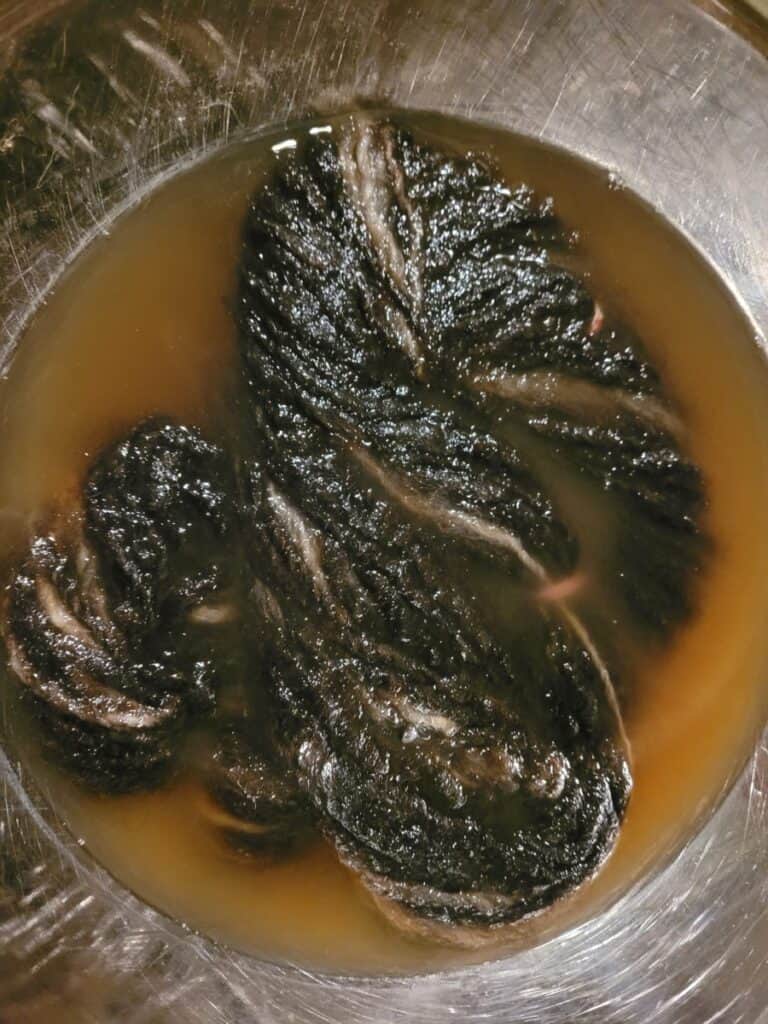
It looks really dirty now, but it will rinse clean pretty easily.
Using a raw fleece
The fleece you are working with may be completely unwashed, also called raw or grease wool.
It is possible to spin wool without washing it first if you are fine with using unwashed wool and the wool fibers are, once again, easy to separate out by hand.
I like to spin raw wool, as long as the fleece is low to no VM and does not have much lanolin.
I have a few fleeces that I keep back from shearing each year and one of them is surprisingly high in grease.
It doesn’t look it, but when I spin with that wool my fingers get shiny from the grease, that’s a bit too much for me. For other folks, this might be fine, for me, I need to wash this one first.
Another fleece, from our one and only colored ewe, is a nice, easy to use fleece that does not have much grease at all. It’s easy to work with and never feels greasy.
Do you need to have your wool processed?
If your wool is not working for you raw then try a suint soak. Put the wool in lukewarm water for overnight then drain it and lay it out to dry. Now, see how the wool work for you.
I tried a suint soak on the more felted parts of the colored fleece we have and it made a big difference. I still had to use a flick carder, but it was much faster than the unsoaked wool.
If you are still having problems, you’ll either need to wash the fleece yourself or send it off to be processed for you.
From making some basic calculations, I have figured out that having an 8 pound fleece processed will cost you about $80 or $20 per pound of processed fiber.
For anyone who said, those numbers don’t make sense, here’s why: your raw wool will lose about half of it’s weight in processing, mostly due to removing the lanolin. So the 8 pound fleece is now 4 pounds.
This $20 per pound of processed fiber is for washing and processing into combed top starting with at least 7 pounds of wool.
If you start with less wool, have really dirty wool or have a fleece that needs multiple washings, etc., it will cost more. This also does not include cost of shipping the fleece in or the finished fiber back to you.
Here is Zeilinger Wool Company‘s suggestions on getting your wool processed at a fiber mill.
Of course, there are other fiber processors you could use, you can easily search online to find one closer to you if you prefer.

